These Scottish vegan buttermilk plain scones are so soft, light and irresistibly moreish. Not too sweet so perfect for dunking in your favourite soups or stews, as well as tasty filled with vegan whipped cream and fruit jam for an afternoon tea special.
Or simply split, toast, spread with margarine, and devour for a delicious quick snack!
This recipe is easy, quick and fuss free, perfect for feeding busy hungry families.
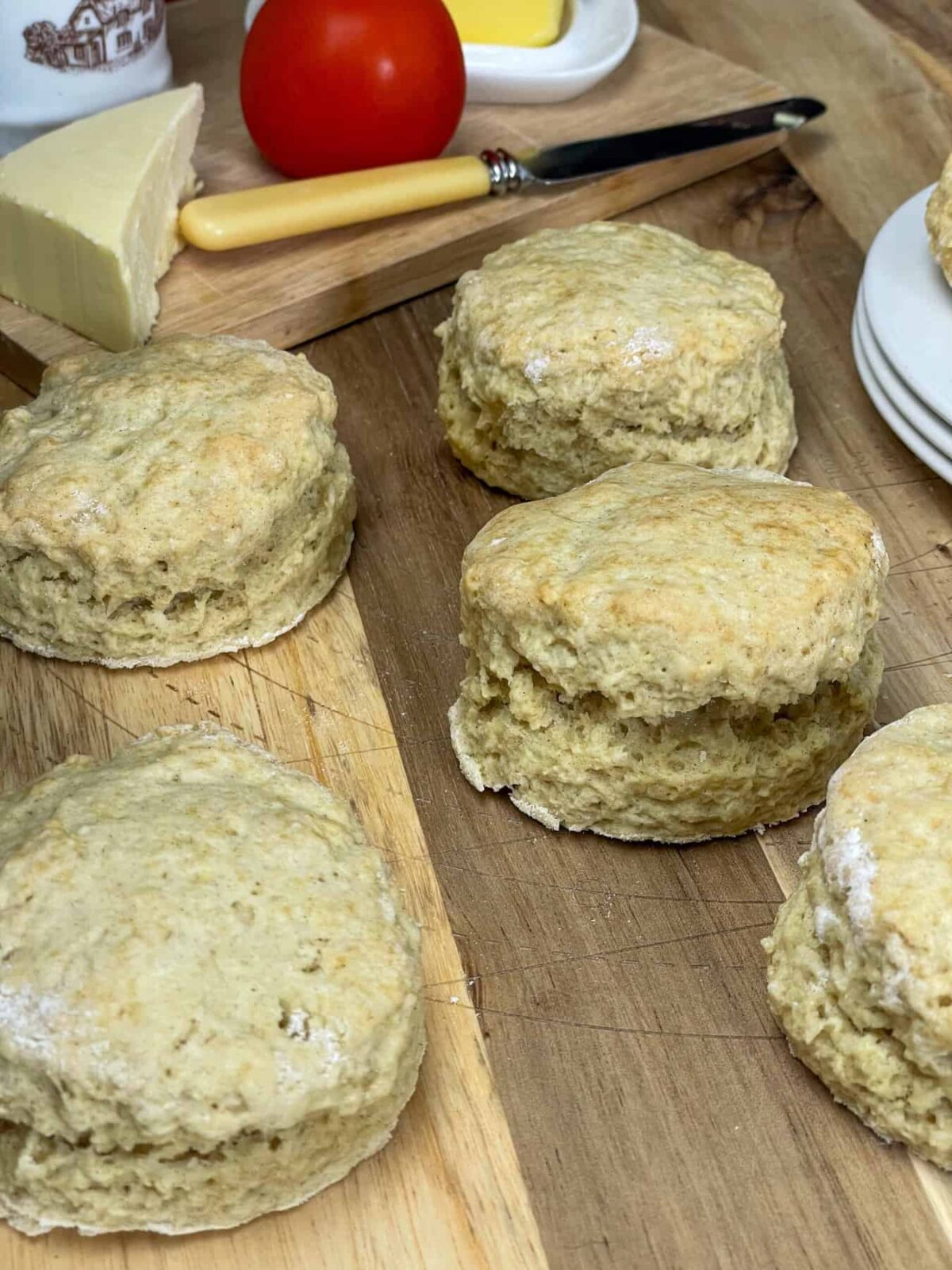
Vegan Buttermilk Scones
Buttermilk is a byproduct of making dairy butter and so is not vegan or plant-based. However, it is so simple to prepare a vegan buttermilk substitute by just mixing soya milk with an acid such as apple cider vinegar or fresh lemon juice, and leaving it to sit for 15 minutes or so to curdle.
For traditional scones, buttermilk is commonly used but so is the alternative sour milk. Sour milk is dairy milk that has turned and gone, well, sour! So is not suitable for drinking but is still fine for baking. Vegan buttermilk can also replace sour milk in recipes.
Including buttermilk in a scone recipe results in a much light, softer scone with a delicious slightly sour flavour. Although the sour flavour is not too sour, but rather just gives a nicely subtle savoury aftertaste that is balanced with the addition of a little sugar.
Many old traditional Scottish recipes for scones include sour milk, as it was the ideal way to use up milk that would otherwise be poured down the sink. And the bakers secretly knew that the sour milk would result in the best home-made scones.
How To Prepare Vegan Buttermilk Scones
First prepare the vegan buttermilk by mixing soya milk with apple cider vinegar [or fresh lemon juice].
Leave to curdle for 15-20 minutes.

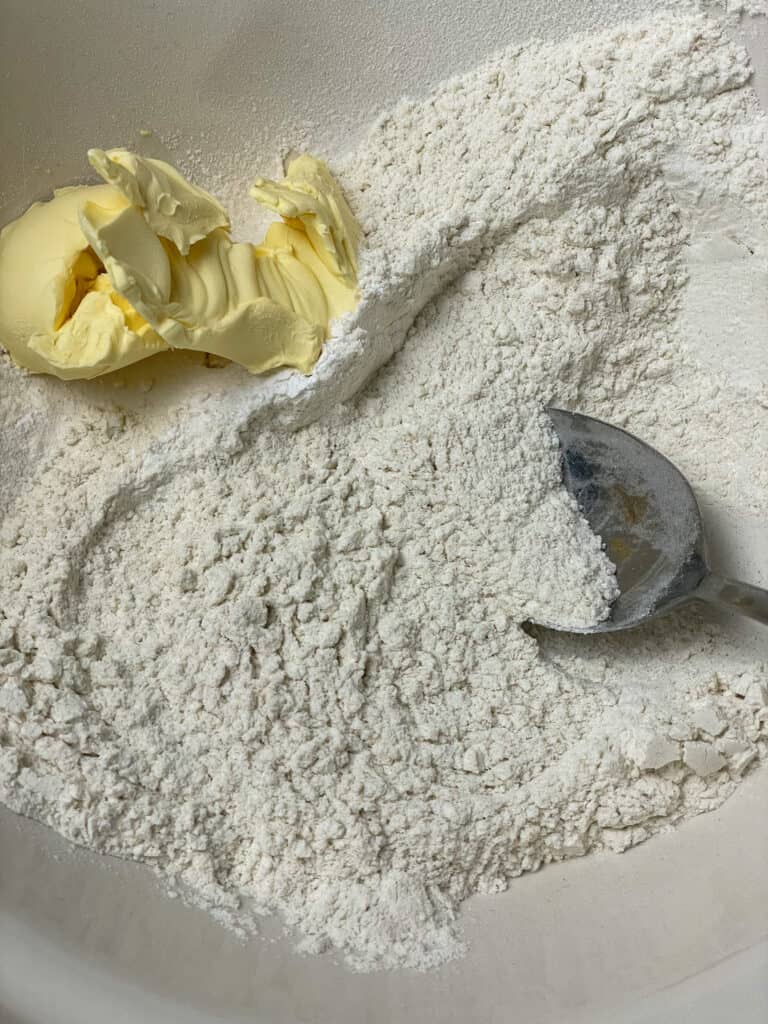
Next, sieve the flour, baking powder, bicarbonate of soda and cream of tartar into a mixing bowl. Stir.
Add the margarine and rub it into the flour until it resembles fine breadcrumbs.
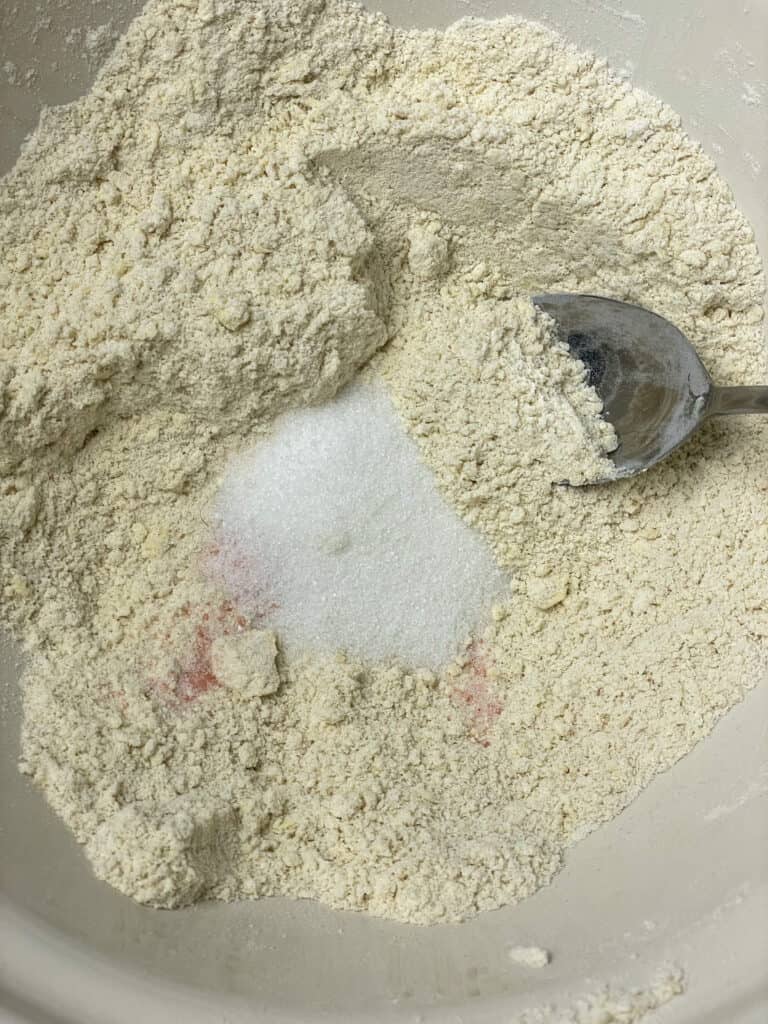
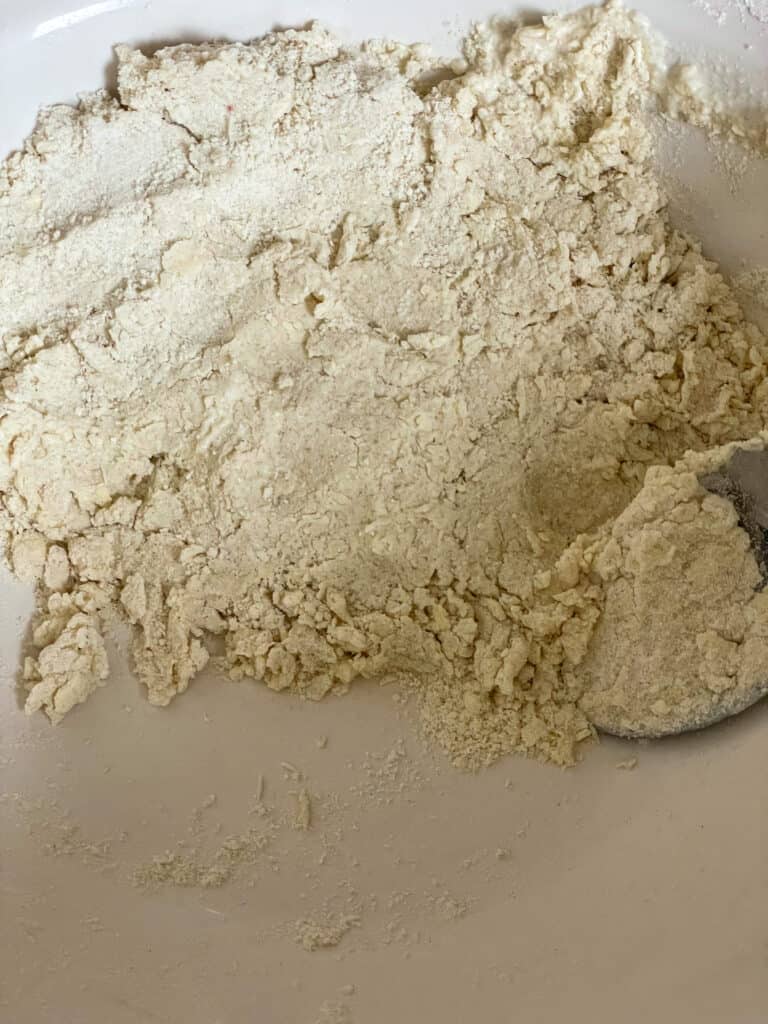
Stir through the salt and sugar.
Pour in half the buttermilk and stir well.
Add small amounts of milk and continue stirring and bringing the dough together into a ball.
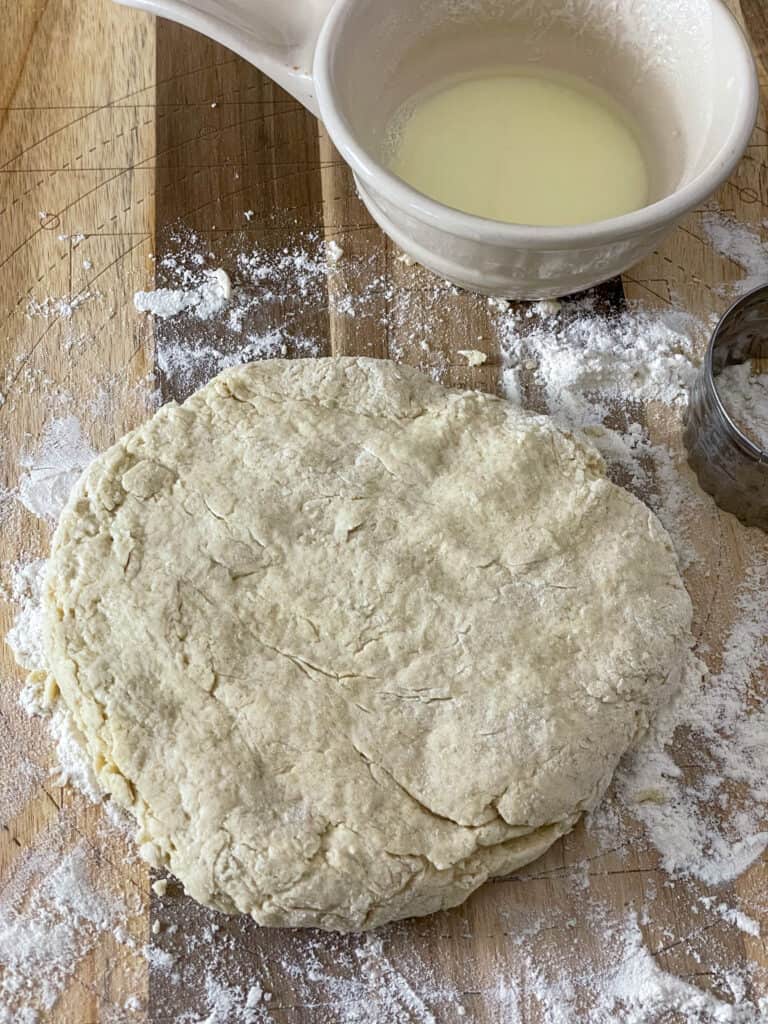
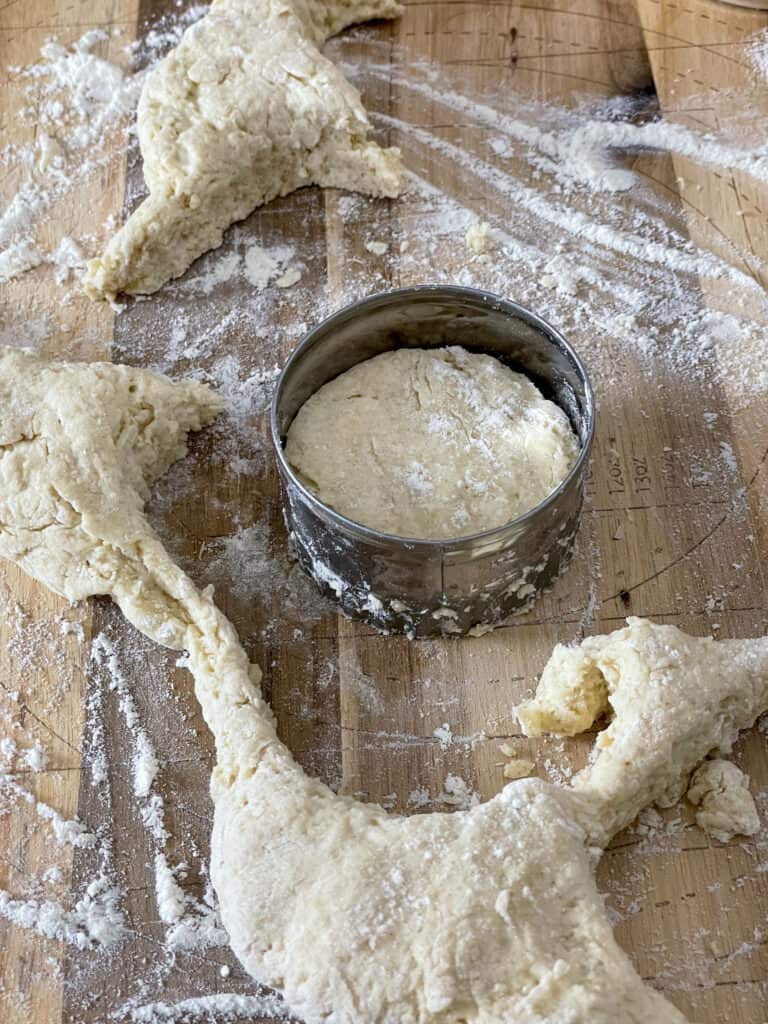
Over a floured surface pat the dough using your hands to about 1 inch thick.
Stamp out scones and place on a baking tray.
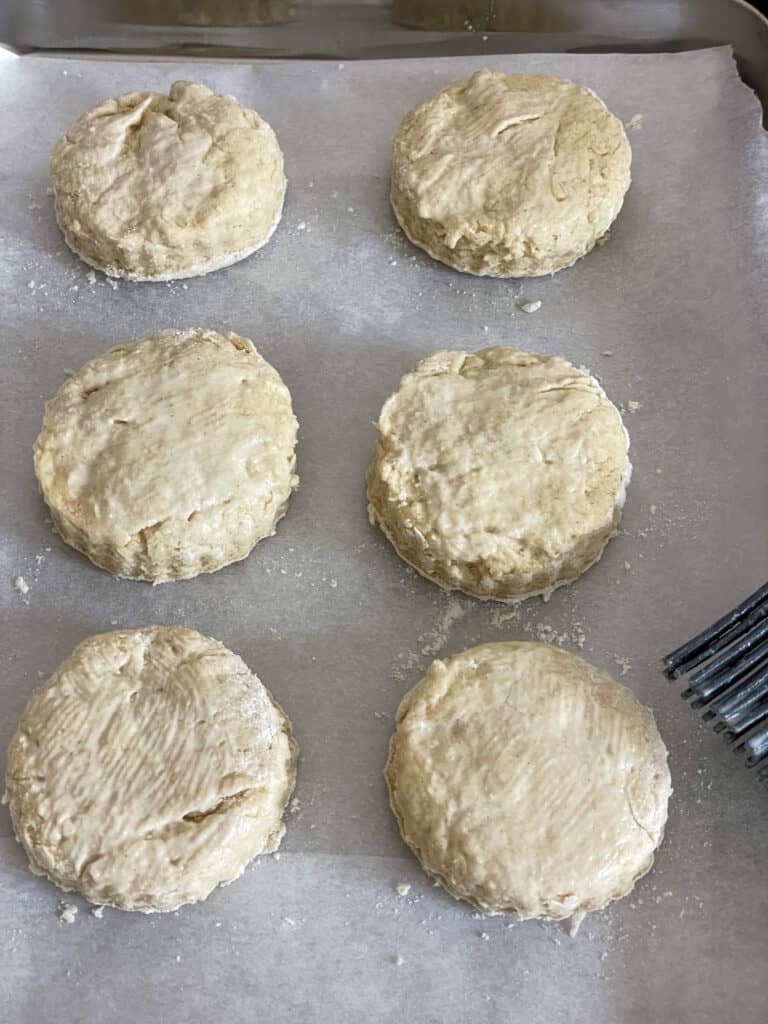
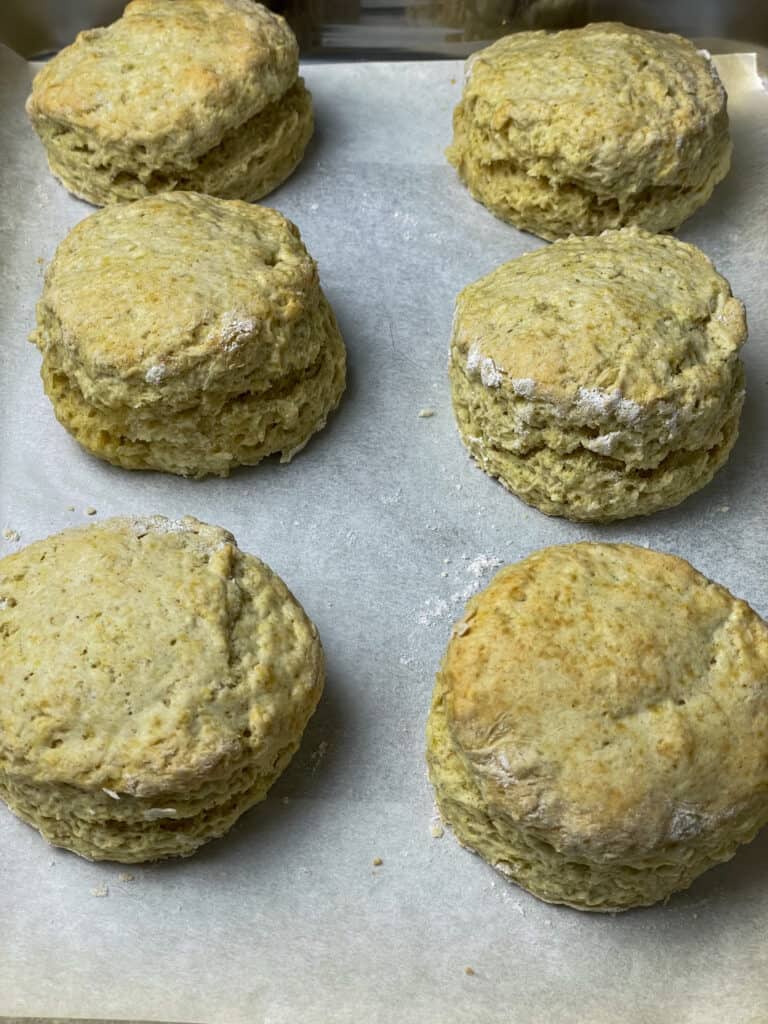
Brush the scones with the leftover vegan buttermilk.
Bake for 12-15 minutes.
Recipe Notes
Storing Scones
Scones will be at their freshest 1-2 days after baking.
Scones can be stored within a food/bread bag, or covered container for 3-4 days. Although if scones are stored in the fridge they can last a few more days.
Older scones can be refreshed in a hot oven or an air fryer for a few minutes.
Or split and toast the scones on a skillet/non-stick fry pan, toaster machine or a panini/crepe maker hotplate. Once each side is toasted spread with some vegan margarine or butter and it will deliciously melt into the scone.
Freezing Scones
Scones can be frozen for 3-4 months. Wrap well [to avoid freezer burn] and place within a freezer bag or container.
To defrost, unwrap the scones and defrost at room temperature.
Does it matter which plant milk is used to prepare vegan buttermilk?
Soya milk is high in protein and so when mixed with acidic fresh lemon juice or apple cider vinegar and left to sit for a short while, the proteins react with the acid and curdle. Other types of plant milk may have a harder time curdling as they tend to be lower in protein.
Although if you really don't want to use soya milk then just use whatever plant milk you prefer and follow the recipe for preparing the buttermilk. Your vegan buttermilk may not visibly look curdled or separated, but the scones will still have the tasty buttermilk flavour.
Although almond milk is also claimed to be a good choice for vegan buttermilk.
What is cream of tartar?
Cream of tartar is a white powder and is exactly like baking powder and bicarbonate of soda [baking soda] in appearance.
Cream of tartar is a byproduct of the wine making process and is generally used for cleaning and baking.
Cream of tartar can help baked goods rise more efficiently, as it gives them a nice rising boost as they bake.
Do I have to use cream of tartar for buttermilk scones?
If you can not source cream of tartar then simply omit this ingredient from the scone recipe.
The cream of tartar gives the scones an extra rising boost whilst baking. But as lemon juice is often used as a replacement for cream of tartar, then perhaps lemon juice can be used to prepare the vegan buttermilk instead of the apple cider vinegar. Although sometimes apple cider vinegar is recommended to replace lemon juice in recipes so probably no need to switch.
What to serve with vegan buttermilk scones
- coffee, tea, chilled plant milk
- fruit jam/jelly and vegan spread
- vegan whipped cream and fruit jam
- chutney, hummus, guacamole, peanut butter
- sliced or mashed banana as a filling
- sliced vegan cheese
- sliced tomatoes, cucumber, radish, etc
- grapes
- olives
- pickles
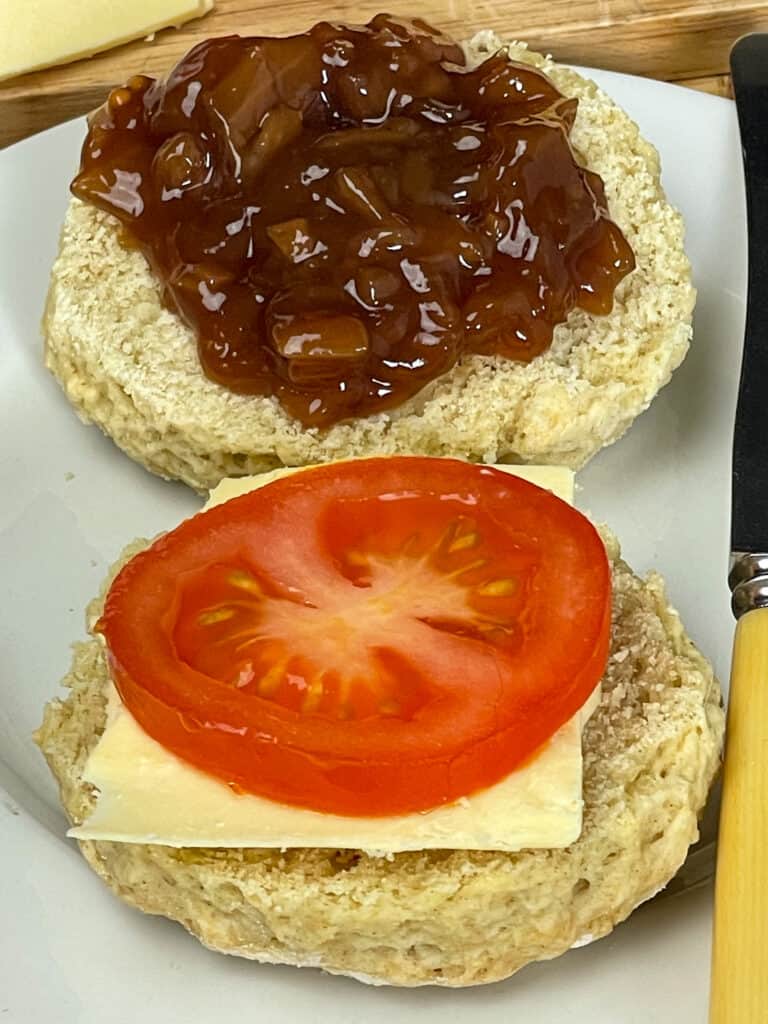
For interesting information including how to prepare the best scone tips and the history of scones, do check out our other vegan scone recipes especially these Edinburgh Fruit Scones and British Cheese Scones. Not forgetting these old-fashioned Scottish Treacle Scones which are a particularly delicious treat.
📖 Recipe
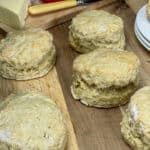
Vegan Buttermilk Plain Scones
Equipment
- Baking tray lined with parchment paper if necessary
- Mixing bowl
- cookie/biscuit cutter around 2 inch [5cm] diameter
- Pastry brush optional, can just use fingertips
- Jug or small bowl to prepare vegan buttermilk
Ingredients
Vegan buttermilk:
- 200 mililitres soya milk soya milk curdles well, other plant milks less so but can still be used
- 2 teaspoons apple cider vinegar or fresh lemon juice
Scone mix:
- 225 grams plain flour all-purpose flour
- 2 teaspoon baking powder level measurement [i.e. run a knife over the teaspoon after scooping the powder to avoid adding too much]
- ½ teaspoon bicarbonate of soda level measurement
- ½ teaspoon cream of tartar level measurement
- 60 grams vegan margarine or vegan butter
- ½ teaspoon salt
- 30 grams sugar such as granulated/caster
Instructions
Prepare the vegan buttermilk:
- Pour the soya milk into a jug or small bowl. Add the apple cider vinegar and stir well. Leave for 15-20 minutes to curdle.
Meanwhile prepare the scones:
- Preheat the oven to 200 Fan/ 220C/ 428 Fahrenheit/ Gas 7.
- Line a baking tray with parchment paper.
- Sieve the flour, baking powder, bicarbonate of soda and cream of tartar into a mixing bowl.
- Stir through the salt and sugar.
- Add the margarine to the bowl and using your fingertips rub the margarine into the flour mixture, until it resembles fine breadcrumbs.
- Pour in half the buttermilk and stir, add small amounts of milk and keep stirring until the scone dough starts to come together. You may not require all the buttermilk, use just enough to bring the dough into a ball. [if you run out of buttermilk simply use a little ordinary plant milk]
- Add some flour to your work surface and dust your hands with flour.
- Gently knead the scone dough together and pat down into a round about 1 inch thick [2.5cm].
- If the dough is too sticky sprinkle in some extra flour and if the dough is too dry work in a little extra milk.
- Dust the biscuit cutter with some flour.
- Use the biscuit cutter and stamp out 6 scone rounds. [be careful to not twist the biscuit cutter when lifting the scone, just pull away the extra dough from the sides of the cutter and lift the cutter straight up. Gently push out the scone]
- When the scone round is not big enough for the biscuit cutter, bring the dough back together into a ball and pat down to 1 inch high. Repeat until all the dough has been used.
- You may have enough dough leftover for an extra smaller scone that is too small for the biscuit cutter. Simply use your hands to form it into a small round and bake with the rest of the scones. This is the bakers bonus or tester scone!
- Brush the top of the scones with leftover vegan buttermilk. Be careful not to brush the milk round the sides of the scone, as this can affect the rise and shape of the scone.
- Place in the oven and bake for 12-15 minutes. Check your scones after 12 minutes, scones are ready when they have risen, are lightly golden and if you pat the bottom of the scone it will sound sort of hollow.Fan ovens tend to bake faster so if using a fan oven check your scones after 10 minutes.
- Either leave the scones on the baking tray to cool or transfer to a wire rack. Or enjoy warm.
Notes
- Nutritional information is provided for guidance only and is not a strict calculation as ingredients vary.
- Store buttermilk scones within a food container or food/bread bag for up to 3 days.
- Older, staler scones can be refreshed by placing in a warm oven for a few minutes, or even re-heat for a minute or two in an air-fryer.
- Fresh or staler scones are simply delicious split in two and toasted, then spread with a little vegan margarine. So good! Toast each cut side within a dry fry-pan/skillet or panini hotplate, or toaster.
- Toasted buttermilk scones are ideal for a quick breakfast, brunch, or snack.
- Scones are perfect for the freezer, and can be frozen [well wrapped and placed in a freezer bag or food container] for 3-4 months.
- Buttermilk scones are a tasty side-dish accompaniment for your favourite soups and stews. Enjoy a plain scone instead of doughballs.
- Or split the scones and spread with margarine, vegan butter, hummus, guacamole, chutney, vegan soft cream cheese, peanut butter, fruit jam/jelly, etc.
- A wedge of vegan cheese, sliced tomatoes and cucumber, olives, etc, and a buttermilk scone makes for a tasty light lunch.
- For an afternoon tea time treat, fill the scones with whipped vegan cream and dollop of fruit jam/jelly.
Nutrition
Prepared this tasty vegan buttermilk scone recipe?
Do pop a comment below and let us know how you got on.
Sharing a photo on social media?
Tag us in using @traditionalplantbasedcooking or #traditionalplantbasedcooking
So we can admire your good cooking!
Thanks so much
Jacq x


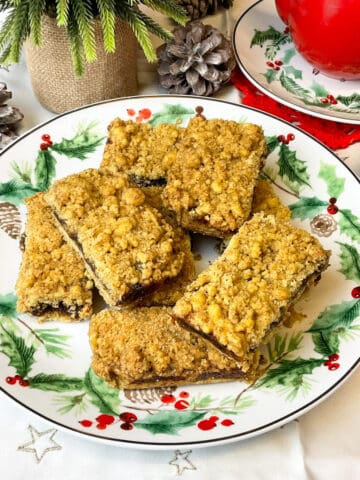
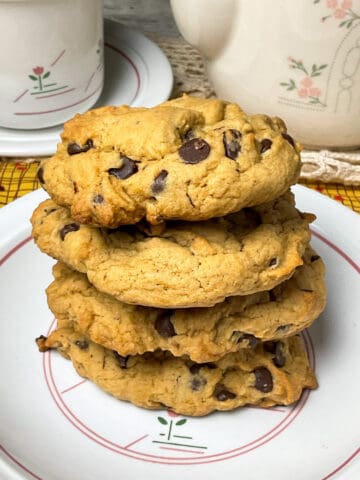
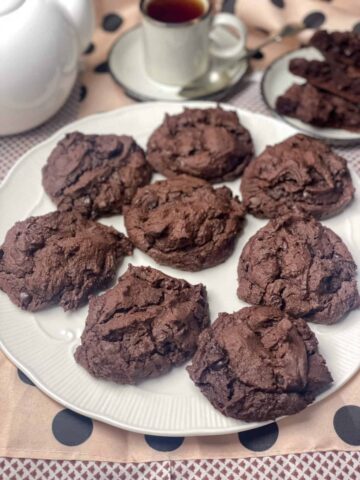
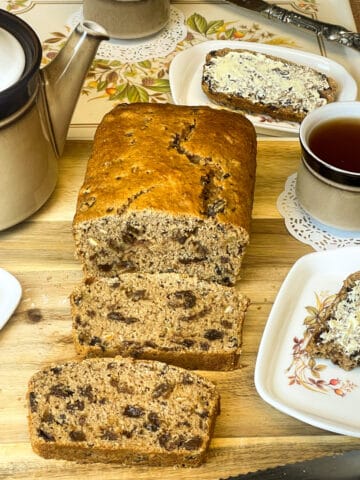
Leave a Reply